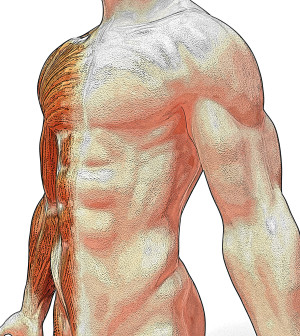- Navigating Your Midlife Crisis: Embracing New Possibilities
- City Raccoons Showing Signs of Domestication
- Mapping the Exposome: Science Broadens Focus to Environmental Disease Triggers
- One Week Less on Social Media Linked to Better Mental Health
- Your Brain Changes in Stages as You Age, Study Finds
- Some Suicide Victims Show No Typical Warning Signs, Study Finds
- ByHeart Formula Faces Lawsuits After Babies Sickened With Botulism
- Switch to Vegan Diet Could Cut Your Greenhouse Gas Emissions in Half
- Regular Bedtime Does Wonders for Blood Pressure
- Dining Alone Could Mean Worse Nutrition for Seniors
Subway Surveillance Video Provides Clues to Suicidal Behavior

Real-time video surveillance could help identify people at risk of suicide attempts in subway stations, Canadian researchers report.
They reviewed closed circuit TV footage of 66 previous suicide attempts at a subway station in Montreal. They concluded that 24 percent of those attempts could have been identified and possibly prevented by people monitoring live video for certain types of behaviors.
According to the researchers, two or more of the following behaviors appeared to indicate a suicide risk:
- Leaving objects on the platform.
- Frequently looking down the tunnel.
- Standing for long periods on the yellow line.
- Continually walking on the yellow line.
- Looking physically agitated.
- Staring at the tracks or the tunnel for long periods of time.
- Seeming depressed.
The study was published Dec. 14 in the journal BMC Public Health.
“Several of these behaviors have the potential to be detected automatically using computer technology so our study provides ground work for research to develop novel ways to prevent suicide attempts at metro stations,” lead author Brian Mishara said in a journal news release.
Mishara is director of the Center for Research and Intervention on Suicide and Euthanasia at the University of Quebec in Montreal.
A number of the behaviors were easy to spot. But others — such as intoxication, physical agitation, anxiety and depression — were tougher to detect, the researchers noted.
“Identifying these behaviors was difficult not just because of the issue with interpretation of certain behaviors but also because of the emotional challenge from watching the [surveillance] footage,” Mishara said.
In slightly more than one-third of the attempts, other people in the station tried to save the person.
The researchers said that in about three-quarters of the suicide attempts, there were clear indications that the person might be changing their mind. These signs included hesitation, trying to protect themselves from the train or trying to stop their jump after it was too late.
More information
The U.S. Centers for Disease Control and Prevention has more on suicide prevention.
Source: HealthDay
Copyright © 2025 HealthDay. All rights reserved.










